Decorations and books are up this month for Election Day, Veterans Day, and Thanksgiving. In honor of Native American Month I’ve erected a simple tipi as a quiet place for students to read books about Native Americans.
I promised to describe in detail the most popular recess activity in the library (and the most educational). All students (1st through 5th) are welcome to help reshelf books in order to earn points for prizes. It took me years to figure out an easy way to do this. The first time I tried an elaborate training program with older students who had to pass a test of the dewey decimal system before they could start. It took too much time, was too difficult for more than a select few students to try, and when I saw a 5th grader filling empty shelves with books--I gave up!
HOW IT WORKS FOR PRIMARY STUDENTS: There is no training process. Students write their names on an index card, grab a book from the rolling cart (where I have one side for E books only) and either have a friend help them shelf it or I take a minute to help them with their first book. 1st through 3rd may only shelf E books. Our spine labels include the first three letters of the author’s last name and the shelves have the beginning letter posted on them. I try to hand a first timer a book that I know will have other books with the exact same spine label. (I don’t expect students to put the books in order beyond those first three letters so books by Martin, Marshall, and Marsh will all be lumped together but it’s not that difficult for a teacher to locate a needed book within that range). Once the student finds the proper location for the book, they shelf it, and slide the index card with their name next to the book. Then they stand there and call me to come check the book. If it’s correct I write a star on their card and they go get another book. If it’s not I give them hints on where to go.
The most difficult books for a newbie 1st grader are the ones that are the only spine label on the shelf. Certain students take delight in these challenges so the book can be handed off to them. Or I give the student a shelf marker with the alphabet labeled on it (wooden paint sticks I’ve decoupaged) and show them how to go about locating where it would go. They get 2 stars for putting away a difficult book.
Prizes, of course, are the incentive. I have a storage shelf with boxes full of prizes. I’m a quilter and have endless scraps of fabric so for one star you may choose a piece of fabric or a bookmark. There is a 3* box, a 5* box, 10* box, 15* box, and 20* box. When the student buys a prize the stars are crossed off. When a card is filled (and crossed off) on both sides the student gets to choose a prize from the special Fill a Card box.
LOCATING PRIZES: The prizes mostly come from parents. I’ve posted a notice in the monthly school newsletter or tapped parents of middle schoolers and have bountiful supplies of trinkets. I also put in weird stuff I collect—book posters, bones, colored rocks, knick knacks, little boxes, stickers, free books—stuff kids like! You can approach people holding garage sales and see if you can pick up all the things that don’t sell at the end of the day. Sometimes retiring teachers have things that can be used. I also search Craigslist freebies and have found some great giveaways there.
HOW IT WORKS FOR UPPER GRADES: 4th and 5th graders (and 3rd graders when all the E books are gone) may only put away non-fiction and chapter fiction books which are located in the same area of the library. They need a little more guidance but quickly figure out how to find the correct dewey number and the correct 3 letters of the author’s last name. They get 2 stars for every non-fiction book they shelf and 1 star for chapter books. The books for them to shelf are put on the reverse side of the rolling cart from the E books but once all the books are shelved on that side they may put away E books.
I also have a lot of paperback books that are put into labeled bins. These are sometimes easier to start a newby off. Because it's so easy to put these books away I give a tally mark instead of a star for them. Three tallies then become a star.
Our recesses separate primary from upper grades which makes it easier for one person (me or sometimes an adult at lunch recess) to check the books because I only have to stand in one area of the library instead of racing back and forth from E section to Fiction or Non-fiction. Sometimes there are 20 little voices calling me to come check their books so it can get hectic! It’s a great way to help students learn how to find books and I love it when a student stops re-shelving because he/she has found a book they really want to stop and read.
When a student is finished shelving for the day they slide their card in a file box behind the letter of their first name or I use an old alphabetical card sorting thingey from before the library catalog was computerized. I’ve tried to explain this as best I could but if you have questions feel free to email me. At the end of the year I usually have at least 150 cards which means half our student population has at least tried to shelf books. Some kids come every day, one student has already filled both sides of two index cards this school year (since September!). He’s very dedicated and unfortunately has an annoyingly loud voice when he calls, “Mrs. Cutter, I found a book!” I had to initiate a new rule—if you call me more than two times I take away a star from your card!
Subscribe to:
Post Comments (Atom)
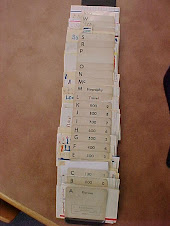
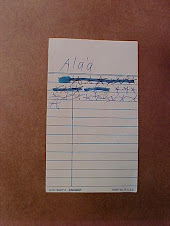
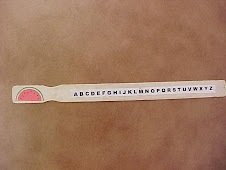
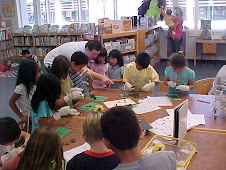
.jpg)
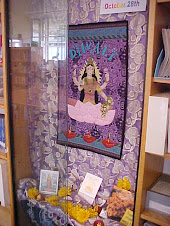.jpg)































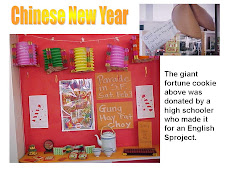






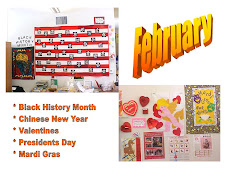




































No comments:
Post a Comment